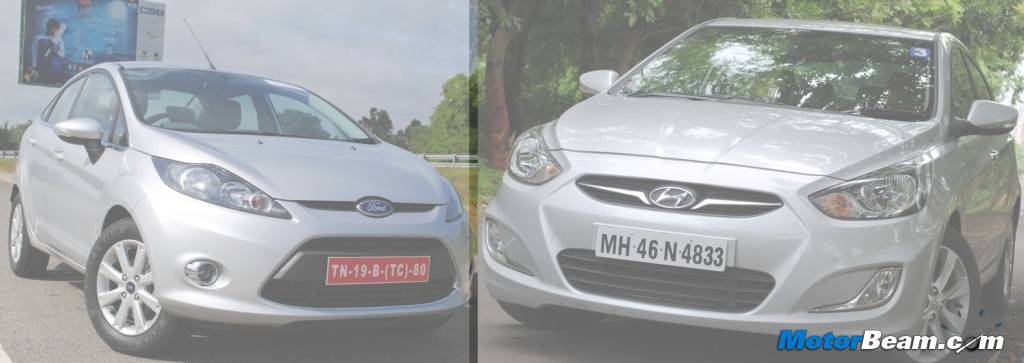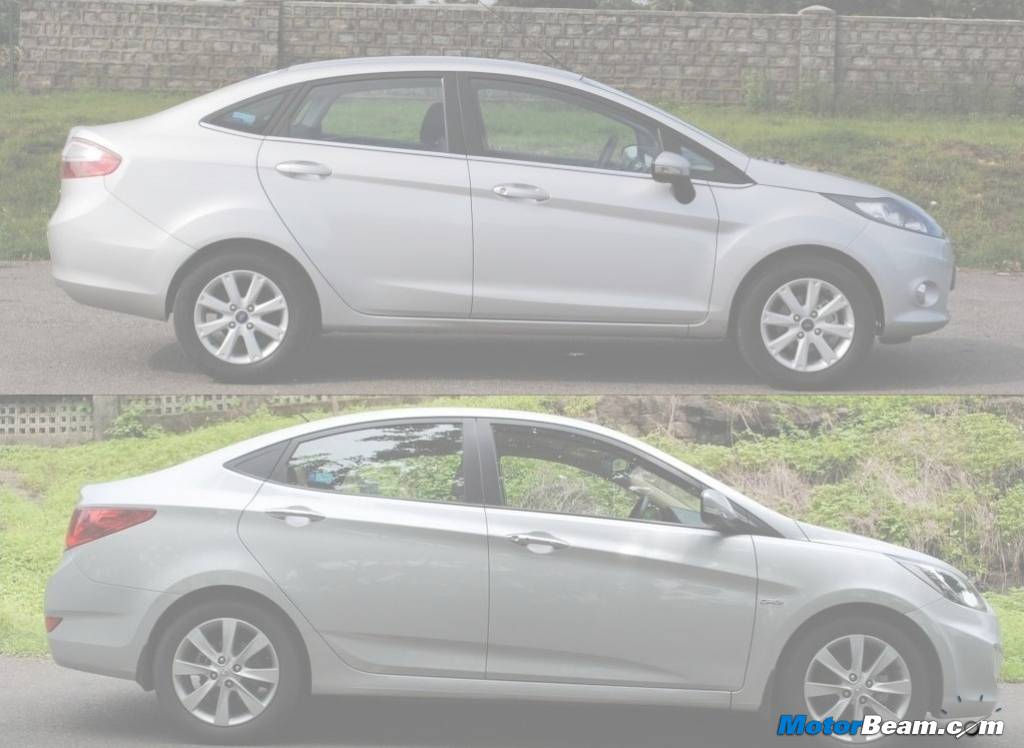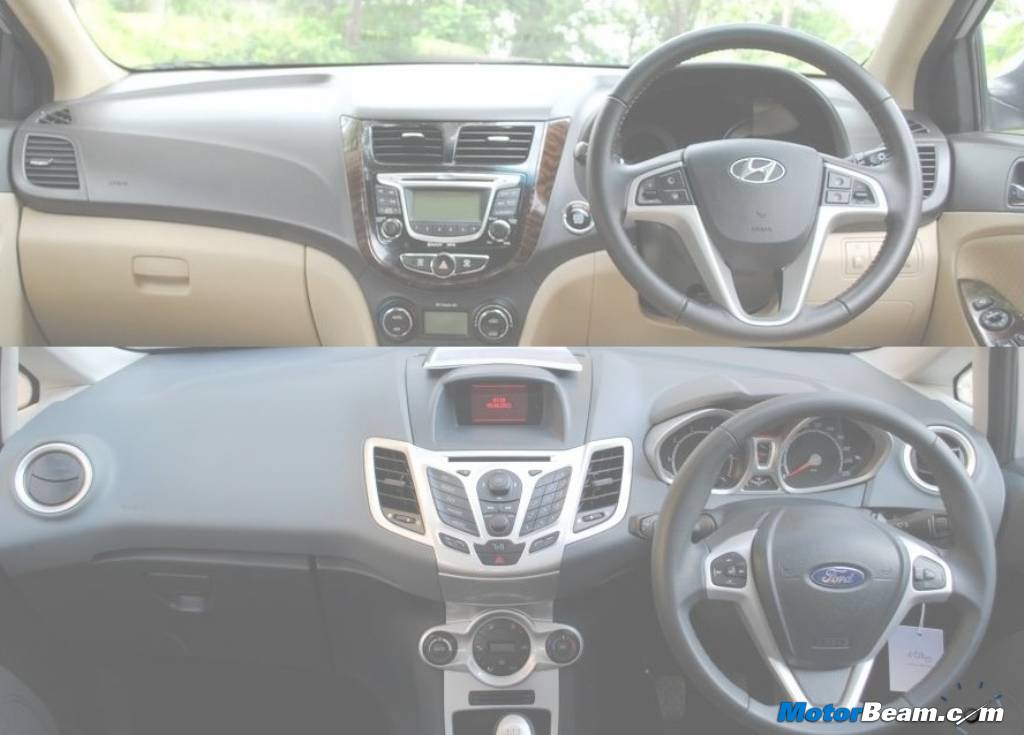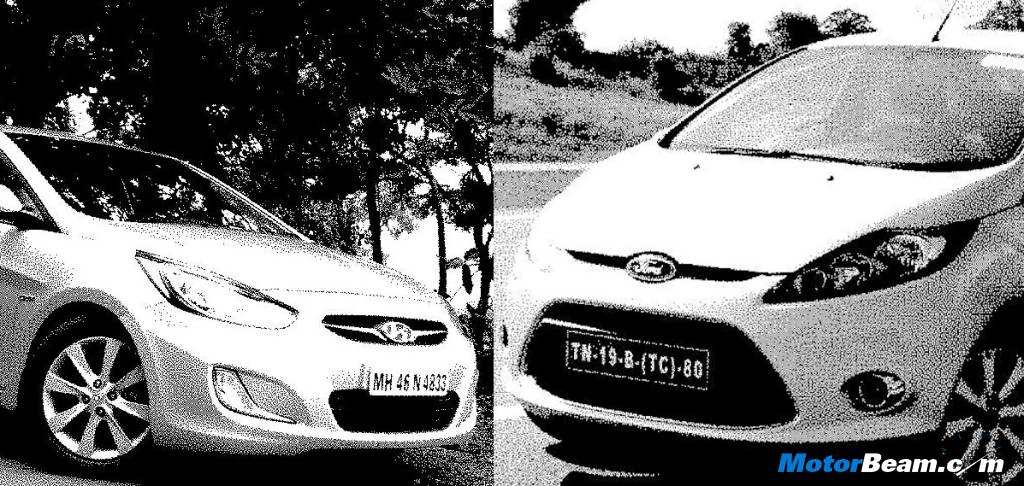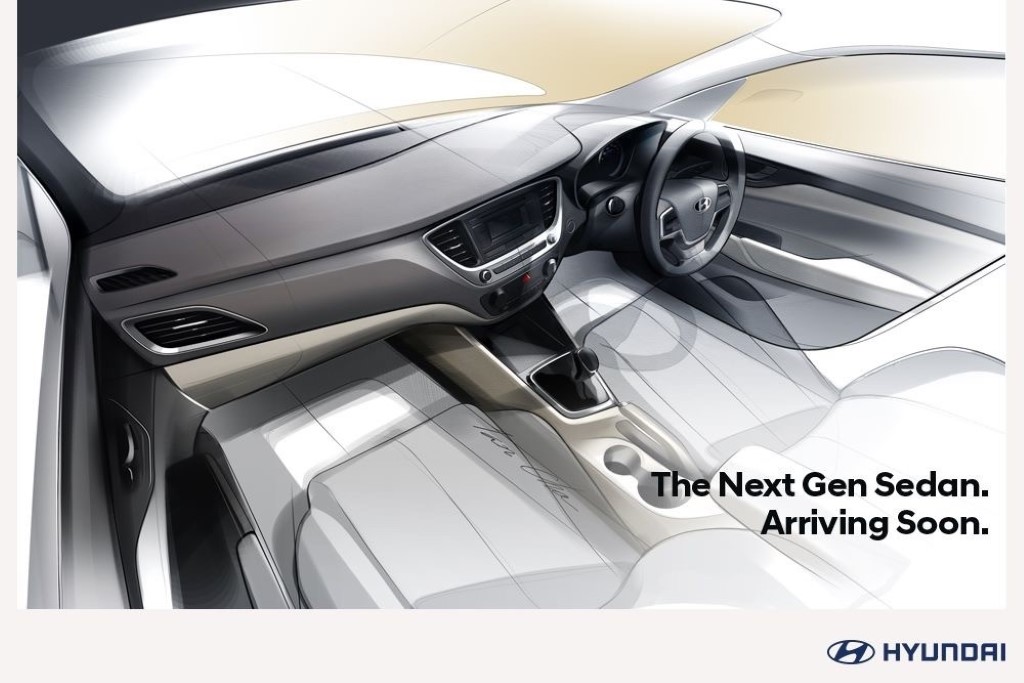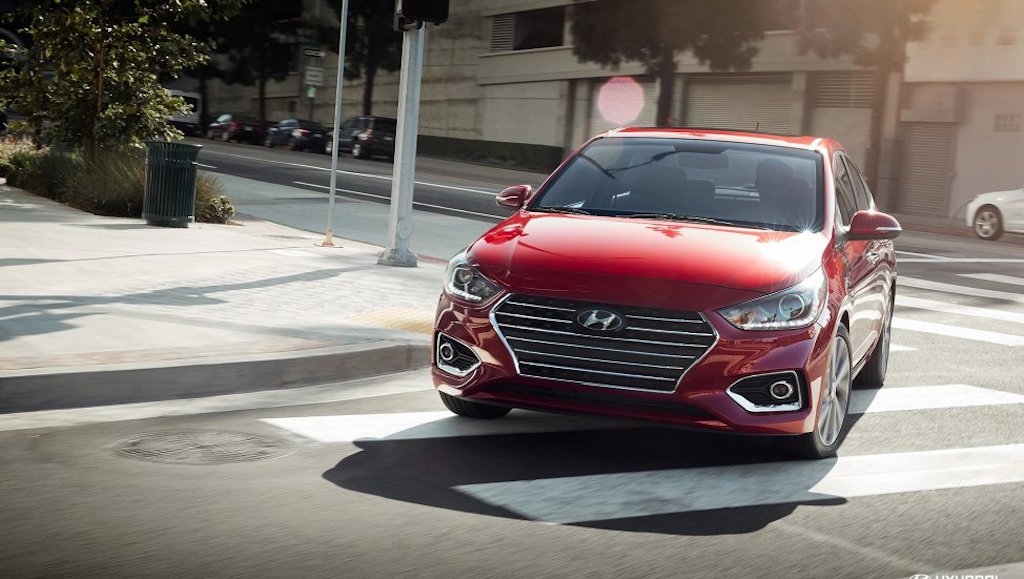Shootout – Ford Fiesta vs Hyundai Verna
The much awaited all new 2011 Ford Fiesta has been launched in India. The C-segment is now complete with just a car from Nissan scheduled to enter this segment in this year. The Fiat Linea is due for an upgrade soon while the Honda City is not available in diesel, which is a dampener for many. The Maruti Suzuki SX4 too is due for an update early next year while the Volkswagen Vento lacks the features which cars of this segment have started to offer. This leaves us with just two cars, which are all new models and are undoubtedly the pick of the segment. We are talking about the all new Ford Fiesta and the Fluidic Hyundai Verna. But which car should you buy? The very aim of this post is to answer that question.
Styling – Both the new Fluidic Hyundai Verna and the new 2011 Ford Fiesta look stunning. In terms of design there is little to choose between the two cars. Both the cars look like they have been designed by the same design house. The Fiesta’s boot is a bit boxy as compared to the Verna, but overall they share similar design language. When viewed from the front, we would chose the Fiesta, when viewed from the side, we would pick the Verna and when viewed from the rear, we would choose neither. Overall you can’t go wrong with either when it comes to the design of these vehicles. At the end of the day, what appeals more to you would matter, as there isn’t a universal decision on which is the better looking car.
Interiors – The new Fiesta offers first in segment features such as voice dialing, voice assisted climate control and cruise control which are missing in the Verna. On the other side, its the Verna which give a reverse guide camera and push button start. The international Fiesta comes with push button start but this has been omitted for the Indian car, cost cutting maybe? As far as interior quality goes, its the Verna which gets better quality plastics and a better overall interior fit and finish. Even the upholstery feels premium.
[singlepic id=6557 w=540 h=375 float=center]
The Fiesta’s plastics look like they have been picked up from a segment lower. Coming to NVH, the Fiesta is better insulated than the Verna, in fact the Fiesta is the benchmark in the segment with the lowest levels of NVH. Front seat comfort is evenly matched between the two and possibly the Fiesta edges marginally ahead. Coming to the rear bench, its absolutely the opposite story. The Verna is far superior as far as the rear space goes, the Fiesta falls short with limited legroom. Headroom is marginally more in the Verna.
[singlepic id=6549 w=540 h=375 float=center]
Performance – In terms of engines, the new Hyundai Verna has twice as many engines on offer than the new Fiesta. On paper, the Verna’s engine looks far stronger in terms of outright power and performance and it’s no different on the road. So it’s difficult to compare the engines due to the different power configuration. The 1.4 Vernas are a better bet for comparison than the 1.6 Vernas. Both pricing and power output wise, it is the 1.4 versions of the Verna which are a right comparison with the new Fiesta. However the base Fiesta offers ABS and EBD as standard equipment, which the Verna 1.4 twins don’t. The Verna 1.6 twins are also available with automatic transmission, while Ford is yet to announce AT variants of the Fiesta. The gearbox of the Verna is smooth and slick, The Fiesta’s is not bad either but engine refinement goes in favour of the Verna.
[singlepic id=6297 w=540 h=375 float=center]
The Fiesta sports 1.5 liter engines and the petrol 1.5 Ti-VCT engine is tuned for efficiency and lacks the power punch but delivers 17 kmpl (ARAI figures). This Duratec Ti-VCT petrol engine gives out 110 BHP @ 6045 RPM & 140 NM of Torque @ 4500. The Diesel is punchy compared to the petrol but as far as performance goes it churns 91 BHP @ 3750 RPM and a torque of 204 NM @ 2000 – 2750 RPM which just does not match to the Verna’s 1.6 diesel powerplant. The Verna does not feel as power hungry and the 1.4 and 1.6 Petrols delivers 106 BHP at 6300 RPM and 122 BHP at 6300 RPM, torque ratings are 138 Nm at 5000 RPM and 155 Nm at 4200 RPM respectively. The CRDI Diesels of the Verna are powerful, the 1.4 delivers 90 BHP at 4000 RPM and torque of 220 Nm at 1750-2750 RPM while the 1.6 Diesel churns out 127 BHP at 4000 RPM and torque of 260 Nm at 1900-2750 RPM. The 1.6 diesel is a rocket, acceleration is brutally quick and the refinement levels are very good too. If you like driving quick in a straight line, simply close your eyes and get the Verna 1.6 CRDi.
[singlepic id=6308 w=540 h=375 float=center]
Ride, Handling, Braking – Hyundai has never been know for sharp handling cars and the new Verna continues this trend. The suspension is soft and the car lacks the confidence to be be pushed hard. Even with the soft suspension, the ride is average. High speed stability is poor and the Verna is bouncy as speeds build up. Brakes of both the cars are excellent owing to disc brakes and decent width tyres. The Verna even offers disc brakes on all 4-wheels, while the Fiesta has rear drums. Both cars stop quickly but due to the poorly calibrated suspension of the Verna, it tends to switch lanes on extreme hard braking. Even after so many years, Hyundai is yet to balance the ride and handling characteristics of it’s cars. On the contrary, Ford certainly has mastered it.
[singlepic id=6571 w=540 h=375 float=center]
The Verna features 16-inch wheels, while the Fiesta makes do with 15-inch wheels. The new Ford Fiesta features a fantastic ride and handling balance. The EPS on the new Fiesta features pull drift compensation which ensures excellent steering feedback at high speeds. Further more the stiff suspension ensures the Fiesta points in the direction you point it at. The ride is excellent too and rarely do you feel the poor road conditions which our monsoons have to offer. A special mention needs to be made about the NVH levels of the Fiesta, which is extremely silent even on bad roads and high speeds.
[singlepic id=6320 w=540 h=375 float=center]
Fuel Efficiency, Pricing – Both the Fluidic Verna and new Fiesta boast of excellent mileage figures (ARAI certified).
[singlepic id=6540 w=540 h=375 float=center]
2011 Ford Fiesta vs Fluidic Hyundai Verna Price Comparision
| 2011 Ford Fiesta | Price (OTR, Mumbai) | 2011 Hyundai Verna | Price (OTR, Mumbai) |
| Style Petrol | Rs 9,63,171 | Fluidic 1.4 VTVT | Rs 8,13,192 |
| Trend Petrol | Rs 10,25,993 | Fluidic 1.6 VTVT | Rs 8,91,418 |
| Titanium Petrol | Rs 10,71,740 | Fluidic 1.6 VTVT SX | Rs 9,60,592 |
| Style Diesel | Rs 10,83,327 | Fluidic 1.4 CRDI | Rs 9,40,166 |
| Titanium+ Petrol | Rs 11,00,706 | Fluidic 1.6 VTVT SX Opt | Rs 10,41,294 |
| Trend Diesel | Rs 11,51,506 | Fludic 1.6 CRDI | Rs 10,18,599 |
| Titanium Diesel | Rs 11,98,272 | Fluidic 1.6 CRDI SX | Rs 10,87,795 |
| Titanium+ Diesel | Rs 12,27,502 | Fluidic 1.6 CRDI SX Opt | Rs 11,79,062 |
| Fluidic 1.6 VTVT SX Opt AT | Rs 11,32,112 | ||
| Fluidic 1.6 CRDI SX Opt AT | Rs 12,60,366 |
Conclusion – Everyone thought Ford would pull a surprise by aggressively pricing the new Fiesta. However many were disappointed by the entry level price of the Fiesta, which has been significantly priced more than the base Verna. Sure Ford had offered ABS, Airbags as standard on all variants but if your budget is less than Rs. 9 lakhs there is no Fiesta which fits your budget. Thus you have no option but to opt for the Verna, which is priced significantly lesser than the new Fiesta. On terms of styling and equipment there is little to chose between these machines as the Verna offers 6-airbags, whereas the Fiesta offers voice activated control. Feature wise both cars are neck and neck.
Coming to the 1.6 Verna twins, the Fiesta turns out to be a better option due to the better ride and handling balance it offers. The Hyundai does have more power and is cheaper to buy. Even with less power, the diesel Fiesta is more fun to drive owing to it’s fantastic steering feedback, handling and high speed stability. Even if you are not the kind who takes to the driver seat often, the new Fiesta is still a worthy option owing to it’s better ride quality. However when you put the pricing into contention, the top of the line Fluidic Verna costs Rs. 40,000 (Rs. 47,000 in case of diesel) cheaper than the top of the line Fiesta. If you spend most of your time on the rear seat, then the Verna is a better option for you. Its difficult to pick a winner here, the Fiesta appeals to the heart with the Verna appealing to the head, now you decide which one should be a winner here!


